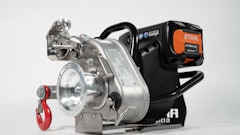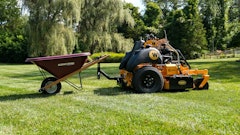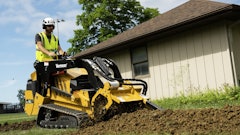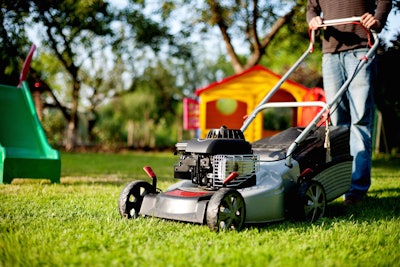
The preparations you make now, ahead of storms, floods or hurricanes, can help you recover faster and stay safe during cleanup. The Outdoor Power Equipment Institute (OPEI), an international trade association representing small engine, utility vehicle, and outdoor power equipment manufacturers and suppliers, reminds home and business owners that it’s best to get ready before a storm strikes.
“In the rush right before the storm, people sometimes forget to make sure their outdoor power equipment is in order,” said Kris Kiser, president and CEO of OPEI. “They also run out of time as weather is often unpredictable. At all times of the year, it’s important to keep your equipment in working order, have the right fuel on hand and know where your safety gear is. This is doubly true during storm season.”
The OPEI offers the following tips to help homeowners and businesses plan ahead for storm cleanup:
- Make a list of what you need to clean up. Survey your property. Consider the damage a storm might cause and make a list of what tools might be needed for repairs. You might need a chainsaw, pruner, generator or utility vehicle.
- Take stock of your outdoor power equipment. Make sure equipment is in good working order. If needed, take your equipment to an authorized service center for maintenance or repair.
- Find your safety gear. Avoid the scramble for sturdy shoes, safety goggles, hard hats, reflective clothing and work gloves, which should be stored in an accessible area with your equipment.
- Review the owner’s manuals for your equipment. Read product manuals to ensure you know how to operate your equipment safely.
- Have the right fuel on hand. Fuel stations may be closed after a storm, so it’s important to have the proper fuel for your equipment. Store your fuel in an approved container. Use the type of fuel recommended by your equipment manufacturer. It is illegal to use any fuel with more than 10 percent ethanol in outdoor power equipment.
- Remain calm and use common sense when using outdoor power equipment. Clearheaded thinking and smart decision-making can help you make smart choices. This is no time to rush. Take time to think through a strategy for clean-up efforts.
- Use safety precautions. Be aware of fundamental dangers that can occur. For instance, chainsaw kickback, which may happen when the moving chain at the tip of the guide bar touches an object, or when the wood closes in and pinches the saw chain in the cut. Always stand with your weight on both feet and adjust your stance so you are angled away from the blade. Hold the chainsaw with both hands. Never over-reach or cut anything above your shoulder height. Always have a planned retreat path if something falls. Read more about chainsaw safety.
- Keep firm footing when using pole saws and pole pruners. Keep a firm footing on the ground. Observe the safety zone, which means keeping bystanders and power lines (those above you and any that might have fallen down) at least 50 feet away from your work area.
- Ensure portable electric generators have plenty of ventilation. Generators should never be used in an enclosed area, or placed inside a home or garage, even if the windows or doors are open. Place the generator outside, and away from windows, doors and vents that could allow carbon monoxide to come indoors. Keep the generator dry, and do not use it in rainy or wet conditions. Before refueling, turn the generator off and let it cool down.
- Drive utility-type vehicles (UTVs) with caution. Keep the vehicle stable and drive slowly. Do not turn the vehicle mid-slope or while on a hill.
- Be aware of others. Keep bystanders, children and animals out of your work area. Do not allow other people near outdoor power equipment, such as chainsaws, pole saws or pole pruners when starting the equipment or using it.
- Pay attention to your health. Storm cleanup can be taxing on the body and the spirit. Do not operate power equipment when you are tired or overly fatigued. Drink plenty of water and take regular breaks.
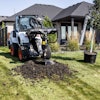
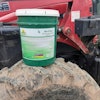

![Doosan Bobcat Wacker Neuson Stack 2ec Js Pb V6e[1]](https://img.greenindustrypros.com/mindful/acbm/workspaces/default/uploads/2025/12/doosan-bobcat-wacker-neuson-stack2ecjspbv6e1.CPyyz8ubHn.png?auto=format%2Ccompress&bg=fff&fill-color=fff&fit=fill&h=100&q=70&w=100)
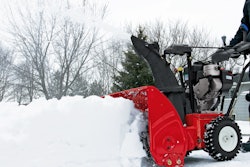
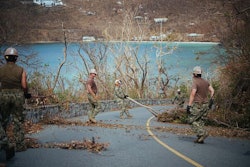
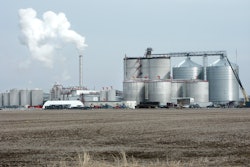
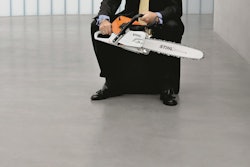
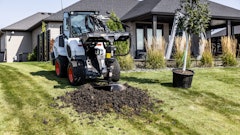
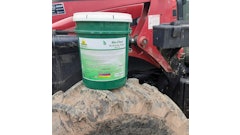

![Doosan Bobcat Wacker Neuson Stack 2ec Js Pb V6e[1]](https://img.greenindustrypros.com/mindful/acbm/workspaces/default/uploads/2025/12/doosan-bobcat-wacker-neuson-stack2ecjspbv6e1.CPyyz8ubHn.png?ar=16%3A9&auto=format%2Ccompress&bg=fff&fill-color=fff&fit=fill&h=135&q=70&w=240)
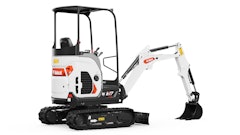
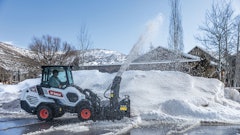
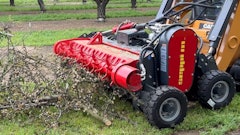
![T708 2025 Ga Tl11 R3 Hr [1 Q5 A1066]](https://img.greenindustrypros.com/mindful/acbm/workspaces/default/uploads/2025/10/t708-2025-ga-tl11r3-hr-1q5a1066.KcuUhTiF78.jpg?ar=16%3A9&auto=format%2Ccompress&fit=crop&h=135&q=70&w=240)
